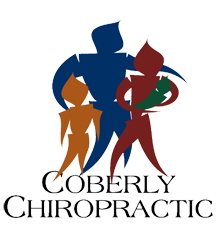An Overview of Short Leg Syndrome: Anatomic versus Functional and How Chiropractic Can Help
There are numerous orthopedic problems that someone may develop and one of the examples is called Short Leg Syndrome (SLS). More commonly known as Leg Length Discrepancy, SLS is a condition that develops when someone has one leg that is shorter than the other. When people think about legs that are of different lengths, they usually think about legs that are markedly incredibly different in their overall sizes. In reality, this is not the case. Even a small discrepancy of only a centimeter or two can add up over the years. Therefore, it is important for everyone to understand Leg Length Discrepancy, how it develops, and how it can be treated.
How Does Leg Length Discrepancy Develop?
There are a number of reasons why someone may develop this condition. In some situations, someone may simply be born with two limbs that are of different lengths. In other situations, someone may develop an infection of the bone that has to be removed surgically. This could result in one leg that is shorter than the other.
In order to better understand the causes of SLS, the condition can be divided into two categories: anatomic and functional. When someone has anatomic SLS, the bones of the legs are literally two different lengths. When someone has functional SLS, the leg bones are the same length; however, there are muscular, ligamentous, or other musculoskeletal issues that cause one leg to act like it is shorter than the other.
In order to better understand the differences between these two classes, it is a good idea to take a look at a few examples. They include:
- Anatomic Short Leg Syndrome: Some of the most common causes of anatomic SLS include hip replacement surgery, congenital scoliosis, and possible childhood injuries that take place while the leg is still developing.
- Functional: Some of the most common causes of functional SLS include IT band tightness, poor running mechanics, a hip injury, issues with the foot arch on one side, osteoarthritis of the musculoskeletal system, and spasticity of the psoas muscle.
It is important to take a closer look at some of the complications that this condition can cause.
The Complications of SLS
There are a number of complications that may develop when someone has this condition. A few examples include:
- One of the most common symptoms is pain that can arise in the ankles, knees, hips, back, or neck
- The pelvis may also be asymmetrical, as one portion of the pelvis has to rotate up or down to accommodate for the leg length discrepancy
- Individuals may also develop muscle tightness or nerve pain as a result of this condition
These symptoms can lead to serious quality-of-life issues. That is where a chiropractor can help.
The Treatment of Short Leg Syndrome with the Help of a Chiropractor
Some people may believe that they need to have the length of their leg surgically corrected. The good news is that this is not always the case. For those who have functional leg length discrepancy, a chiropractor can provide treatments using adjustments and advanced equipment.
First, the chiropractor will take a look at someone’s back and pelvis. Then, adjustments will be made to ensure that the muscles, ligaments, bones, joints, and tendons of the back and pelvis are aligned properly. This can go a long way toward eliminating the discomfort that people feel. After this, a chiropractor can use orthotics to stabilize the pelvis, hips, and knees, preventing these symptoms from coming back. These manual treatment options can help someone manage SLS while eliminating potentially serious complications and side effects.
If you or a loved one is suffering from Short Leg Syndrome, give us a call. Our Doctor of Chiropractic can help determine if your leg length discrepancy is due to functional problems. If so, we can definitely help! So give us a call today!


